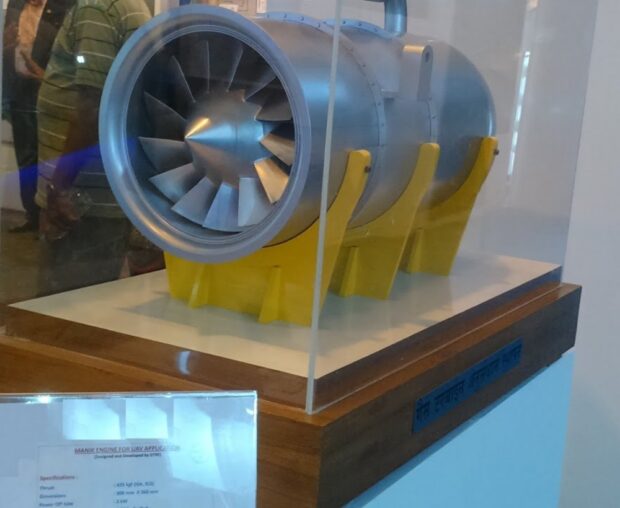The DRDO’s Indigenous Technology Cruise Missile (ITCM) project reportedly suffered another setback after its indigenously developed Manik turbofan engine failed to light up after launch during a test at the Integrated Test Range (ITR) on Friday, October 28, 2022.
New Indian Express reported, quoting officials, that the engine developed “technical glitches” after the post-launch boost phase, causing the missile to plummet into the sea within 30 seconds of its launch.
“The engine was supposed to start after the initial take-off from the specially designed mobile launcher. But it did not start, possibly owing to a snag. The system then fell down,” a defense scientist was quoted as saying.
Manik Engine
Gas Turbine Research Establishment (GTRE), Bengaluru, is developing the Manik engine, a 400-kilogram thrust class Small Turbofan Engine (STFE) for the propulsion needs of subsonic unmanned air vehicles (UAVs).
The twin-spool generic engine is designed and developed for a short operating life. It’s an expendable engine that is expected to last the flight time of the UAV or cruise missile that it powers.
To begin with, the engine will power the ITCM.
It was earlier proposed to develop five engine sets for development testing and three engine sets for Nirbhay integration to be realized by M/s BrahMos Aerospace Thiruvananthapuram Limited (M/s BATL).
Manik features include Engine Mounted FADEC system, an onboard gas generator for engine starting, and an Integrated alternator.
Specifications
|
Thrust |
425 Kgf(IAS,SLS) |
|
By-pass ratio |
1.0 ± 0.05 |
|
Dimensions L x Diameter |
950mm x 350mm |
|
Power Off Take |
3 kW |
|
SFC (kg/kgf/hr) |
0.95 ± 0.05 |
|
Weight |
100 kg |
|
Engine accessories |
20 kg |
Testing
During an interview in November 2021, DRDO Chief Sateesh Reddy said, “We have designed, developed, and manufactured a small turbofan engine for unmanned aerial vehicle applications with the support of Indian industries.
The engine has completed design validation tests on the ground and presently undergoing experimental flight trials.
On successful completion of flight trials, derivatives of these engines will be manufactured for various unmanned aerial vehicle applications, making the country ‘Atmanirbhar’ in this complex and critical technology.
The Manik was reportedly flight-tested in October 2021. The test was partially successful. The engine performed as expected, but the missile did not reach the desired range.
A flight test of the Manik in October 2020 was reportedly aborted due to technical snags.
Ground testing of the Manik has been completed. In May 2018, DRDO scientists tested a prototype of the engine at an altitude above 11,600 feet as part of high-altitude cold climate trials that were started in February 2018.
Following the test, a DRDO official said,
“The successful demonstration validated the design, selection of materials, and the control logic used for lighting and acceleration of the engine to a minimum sustained speed. The performance of pyro systems was as per expectations.”
ITCM
During DefExpo 2020, the DRDO announced the completion and closure of the Nirbhay project and the launch of the Indigenous Technology Cruise Missile (ITCM) project based on technology developed for the Nirbhay project.
The ITCM differs from the Nirbhay. Firstly, it’s powered by the indigenous Manik and not by the Russian Saturn 36MT. Secondly, it features an RF seeker.
Maiden tests of the ITCM fitted with the Manik engine and an RF seeker developed by RCI Hyderabad were expected to be conducted in April 2020.
Air and submarine-launched variants of the ITCM are also proposed to be developed.
Photo: The DRDO-developed Manik turbofan engine – DRDO
Source: The Eurasian Times

